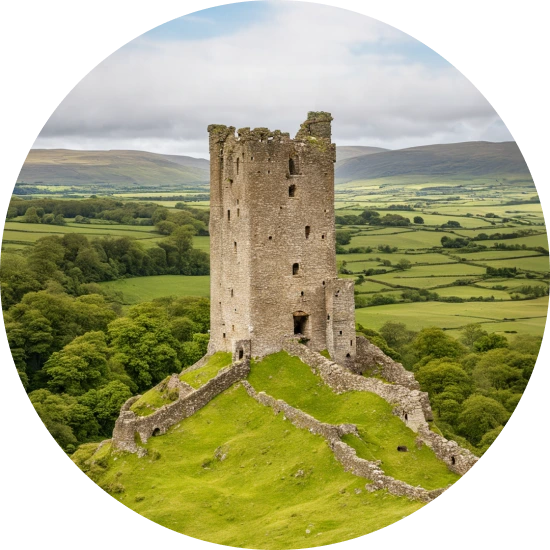Explore the Family Name Gilmore
How common is the last name Gilmore in the United States?
Based on the Decennial U.S. Census, the popularity of the Gilmore surname has seen slight changes between 2000 and 2010. In 2000, Gilmore was ranked 661 in popularity, but by 2010 it had fallen slightly to a rank of 714, representing an 8.02% decrease. However, the actual count of individuals with the Gilmore surname increased from 47,050 in 2000 to 48,719 in 2010, an increase of 3.55%. The proportion of Gilmores per 100,000 people also fell by 5.28%, from 17.44 in 2000 to 16.52 in 2010.
| 2000 | 2010 | Change | |
|---|---|---|---|
| Rank | #661 | #714 | -8.02% |
| Count | 47,050 | 48,719 | 3.55% |
| Proportion per 100k | 17.44 | 16.52 | -5.28% |
Race and Ethnicity of people with the last name Gilmore
The ethnic identity associated with the Gilmore surname also shifted between 2000 and 2010, according to the Decennial U.S. Census. In 2000, 68.20% of Gilmores identified as White, declining to 65.41% by 2010. The percentage of Gilmores identifying as Black rose slightly from 27.09% in 2000 to 28.06% in 2010. There were also increases in those identifying as Asian/Pacific Islander (from 0.36% to 0.52%), Hispanic (from 1.75% to 2.59%), and those claiming two or more races (from 1.75% to 2.55%). The percentage of Gilmores identifying as American Indian and Alaskan Native remained relatively stable, increasing only slightly from 0.86% to 0.87%.
| 2000 | 2010 | Change | |
|---|---|---|---|
| White | 68.2% | 65.41% | -4.09% |
| Black | 27.09% | 28.06% | 3.58% |
| Hispanic | 1.75% | 2.59% | 48% |
| Two or More Races | 1.75% | 2.55% | 45.71% |
| American Indian and Alaskan Native | 0.86% | 0.87% | 1.16% |
| Asian/Pacific Islander | 0.36% | 0.52% | 44.44% |
Gilmore ancestry composition
23andMe computes an ancestry breakdown for each customer. People may have ancestry from just one population or they may have ancestry from several populations. The most commonly-observed ancestry found in people with the surname Gilmore is British & Irish, which comprises 53.0% of all ancestry found in people with the surname. The next two most common ancestries are French & German (21.0%) and Eastern European (3.6%). Additional ancestries include Nigerian, Scandinavian, Italian, Ghanaian, Liberian & Sierra Leonean, and Spanish & Portuguese.
Ready to learn more about your ancestry? Get the most comprehensive ancestry breakdown on the market by taking our DNA test. Shop 23andMe
| ANCESTRY BREAKDOWN | COMPOSITION |
|---|---|
| British & Irish | 53.0% |
| French & German | 21.0% |
| Eastern European | 3.6% |
| Other | 22.4% |

Possible origins of the surname Gilmore
Your DNA provides clues about where your recent ancestors may have lived. Having many distant relatives in the same location suggests that you may all share common ancestry there. Locations with many distant relatives can also be places where people have migrated recently, such as large cities. If a large number of individuals who share your surname have distant relatives in a specific area, it could indicate a connection between your surname and that location, stemming from either recent ancestral ties or migration.
Based on 23andMe data, people with last name Gilmore have recent ancestry locations in the United Kingdom of Great Britain and Northern Ireland and Ireland.
| RECENT ANCESTRY Location | Percentage |
|---|---|
| Greater London, United Kingdom | 83.00% |
| Greater Manchester, United Kingdom | 82.90% |
| Glasgow City, United Kingdom | 82.80% |
| West Midlands, United Kingdom | 82.50% |
| Merseyside, United Kingdom | 82.40% |
What Gilmore haplogroups can tell you
Haplogroups are genetic population groups that share a common ancestor on either your paternal or maternal line. These paternal and maternal haplogroups shed light on your genetic ancestry and help tell the story of your family.
The top paternal haplogroup of people with the surname Gilmore is R-S660, which is predominantly found among people with European ancestry. Haplogroup R-S660 is descended from haplogroup R-M343. Other common haplogroups include R-P311 and R-M222, which are predominantly found among people with European and European ancestry. Other surnames with similar common haplogroups are: Quinn, Mccann, Egan, Mcfadden, Buckner, Hagan, Arrington, Molloy, Greer, Cooney.
The most common maternal haplogroups of people with Gilmore surname are: H1, T2b, H. These most commonly trace back to individuals of European ancestry.
 Paternal Haplogroup Origins R-M343
Paternal Haplogroup Origins R-M343
Your paternal lineage may be linked to Niall of the Nine Hostages
The spread of haplogroup R-M222 in northern Ireland and Scotland was likely aided by men like Niall of the Nine Hostages. Perhaps more myth than man, Niall is said to have been a King of Tara in northwestern Ireland in the late 4th century C.E. His name comes from a tale of nine hostages that he held from the regions he ruled over. Though the legendary stories of his life may have been invented hundreds of years after he died, genetic evidence suggests that the Uí Néill dynasty, whose name means "descendants of Niall," did in fact trace back to just one man who likely bore haplogroup R-M222, a branch of R-M269.The Uí Néill ruled to various degrees as kings of Ireland from the 7th to the 11th century C.E. In the highly patriarchal society of medieval Ireland, their status allowed them to have outsized numbers of children and spread their paternal lineage each generation. In fact, researchers have estimated that between 2 and 3 million men with roots in north-west Ireland are paternal-line descendants of Niall.
Your maternal lineage may be linked to Marie Antoinette
Because it is so dominant in the general European population, haplogroup H also appears quite frequently in the continent's royal houses. Marie Antoinette, an Austrian Hapsburg who married into the French royal family, inherited the haplogroup from her maternal ancestors. So did Prince Philip, Duke of Edinburgh, whose recorded genealogy traces his female line to Bavaria. Scientists also discovered that famed 16th century astronomer Nicolaus Copernicus traced his maternal lineages to haplogroup H.

What do people with the surname Gilmore have in common?
Spoiler alert: it's complicated. People with the same last name are usually no more genetically similar than a randomly sampled group of people from the same population. That said, people with the same surname are more likely to have similar ancestries than randomly sampled individuals. The reason is the tendency of people with similar cultural or geographical backgrounds to preferentially mate with one another. That's why people who share a surname may be more likely to share traits and tendencies in common than people within the general population. Check out the percentages below to see the prevalences of tastes, habits, and traits of people with your surname compared with prevalences among 23andMe users.
Preferences
Traits
Habits
Wellness
Are health conditions linked to the last name Gilmore?
The short answer is that, if there is an association between surname and health, it's usually more about your ancestry than your name. Individuals with a given surname are no more genetically similar than the general population but often have similar ancestries. The populations of people associated with those shared ancestries often have sets of genetic variations, also known as alleles, in common. Some of those alleles are associated with a greater likelihood of developing certain diseases.
Disease variant frequency by ancestry
Disease allele frequencies in populations associated with the surname Gilmore are shown below. Important Note: not everyone with a disease allele will develop these health condition



























